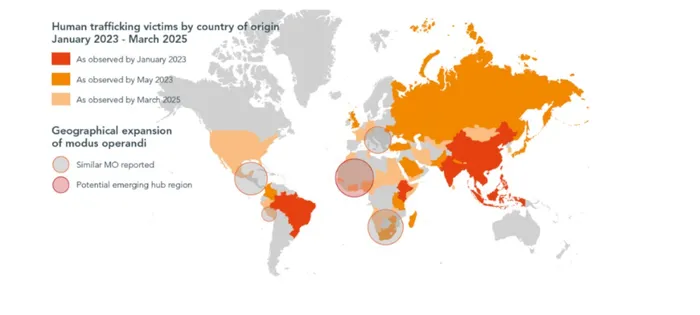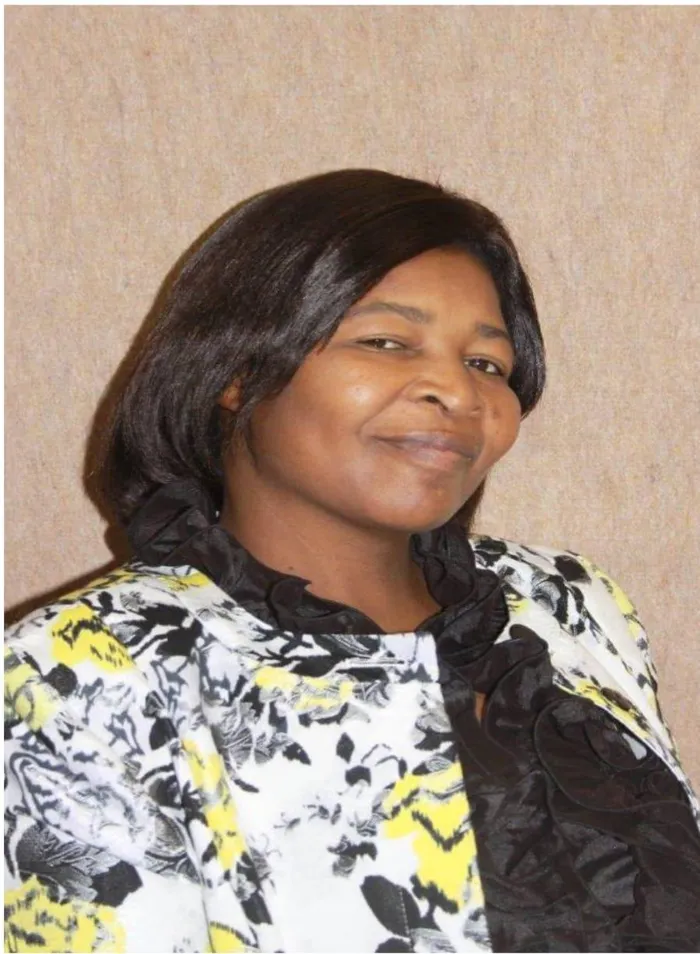Ending scourge of human trafficking requires national response and societal commitment
COMMENT

Sex trafficking dominates reported cases, while labour trafficking is under-prosecuted. Notable cases in South Africa, such as the Lloyd Mabuza case (sex trafficking of young girls from Mozambique) and State vs Fakudze (a life sentence for exploiting a 14-year-old girl), show that strong sentences are possible.
Image: Interpol
Each year, World Day Against Trafficking in Persons, commemorated on 30 July, reminds South Africa of the urgent need to confront human trafficking, a crime that flourishes in secrecy and preys on the country’s more vulnerable. The 2025 theme, ‘Human Trafficking is Organised Crime: End exploitation’, highlights the organised, systematic nature of trafficking and the urgent need to dismantle the powerful criminal networks behind it.
Human trafficking in South Africa is a complex, hidden crime embedded within organised criminal networks. It encompasses sex trafficking, forced labour, domestic servitude, organ smuggling, illegal adoption, debt bondage, forced surrogacy and even the use of body parts in traditional rituals. South Africa is both a source and destination for trafficking, with victims trafficked within its borders and from neighbouring countries like Lesotho, Mozambique, Malawi and Zimbabwe, as well as from Southern Asia.
True scale is under-reported
Official statistics are unreliable, and the true scale of trafficking is obscured by under-reporting, poor data collection, and the hidden nature of the crime. Global estimates suggest millions are affected, with research indicating that, in South Africa, about 55.5% of victims are female and 44.5% male, with the majority aged between 10 and 25 years. High-profile cases, such as the February 2024 disappearance of six-year-old Joshlin Smith in Saldanha Bay, Western Cape, underscore the crisis and its emotional impact on the nation.
Trafficking is closely linked to other illicit activities such as drug trafficking, cybercrime and corruption. Modern technologies, including social media and the dark web, are increasingly used for recruitment and exploitation. Both victims and perpetrators are often undercounted, and community misconceptions such as the belief that traffickers are mostly foreigners further complicate efforts to address the problem. In reality, South African nationals are deeply involved in trafficking networks, as seen in recent cases.
Human trafficking persists in South Africa due to a combination of gender inequality and economic instability. Deep economic divides, high unemployment and persistent poverty create fertile ground for traffickers, who lure victims with false promises of jobs, education or escape from hardship. Organised crime syndicates, both local and transnational, exploit weak law enforcement, corruption and porous borders. The demand for cheap labour and commercial sex, often advertised online, drives exploitation, with little deterrence for buyers or syndicates.
The hidden nature of trafficking, unreliable data, and confusion between trafficking and smuggling hinder effective law enforcement and policy responses. Despite legislative advances, including the Prevention and Combating of Trafficking in Persons Act, enforcement remains weak and trafficking continues to thrive in the shadows.
Survivors and prosecutions
Evidence shows that victims of trafficking in South Africa endure severe physical, psychological, social and emotional abuse. Children are trafficked for begging, forced labour, sexual exploitation, and even organ harvesting. Adults, especially women, are forced into prostitution or domestic servitude, or coerced into labour through violence or debt bondage. Many are manipulated into fearing law enforcement, making escape and recovery more difficult.
Survivors face significant challenges in rebuilding their lives, often suffering from trauma, stigmatisation, and difficulties in reintegrating into society. While some NGOs and government programmes provide support, resources are limited, and lack of comprehensive victim identification and referral systems worsen their plight.
Despite comprehensive laws, successful prosecutions of trafficking syndicates are rare. Sex trafficking dominates reported cases, while labour trafficking is under-prosecuted. Notable cases, such as the Lloyd Mabuza case (sex trafficking of young girls from Mozambique) and State vs Fakudze (a life sentence for exploiting a 14-year-old girl), show that strong sentences are possible when cases reach the courts. However, these are exceptions. Corruption and indifference among some law enforcement officials allow exploitation to persist, and the true number of active syndicates is unknown due to the secretive and organised nature of the crime.
Working together to end trafficking
Human trafficking in South Africa is a lucrative, multifaceted organised crime that thrives on deception, coercion and violence. It is sustained by systematic corruption, weak border controls and deep socio-economic inequalities. Combating this hidden crime requires strengthened law enforcement and anti-corruption measures, improved data collection and reporting, comprehensive victim support and rehabilitation services, aggressive prosecution of traffickers, disruption of syndicates, and societal efforts to reduce the demand for exploitation.
The fight against human trafficking demands more than awareness. It requires a coordinated national response, robust legal action, and a societal commitment to ending exploitation. As South Africa marks World Day Against Trafficking in Persons, the message must be clear: organised crime will not win, and every victim’s story matters. The time to end exploitation is now!
Dr Juliet Sambo is part of the University of Pretoria’s Department of Social Work and Criminology. The opinions expressed in this article are solely those of the author and do not necessarily reflect the views of the university.

Dr Juliet Sambo of the University of Pretoria’s Department of Social Work and Criminology
Image: SUPPLIED
Related Topics: